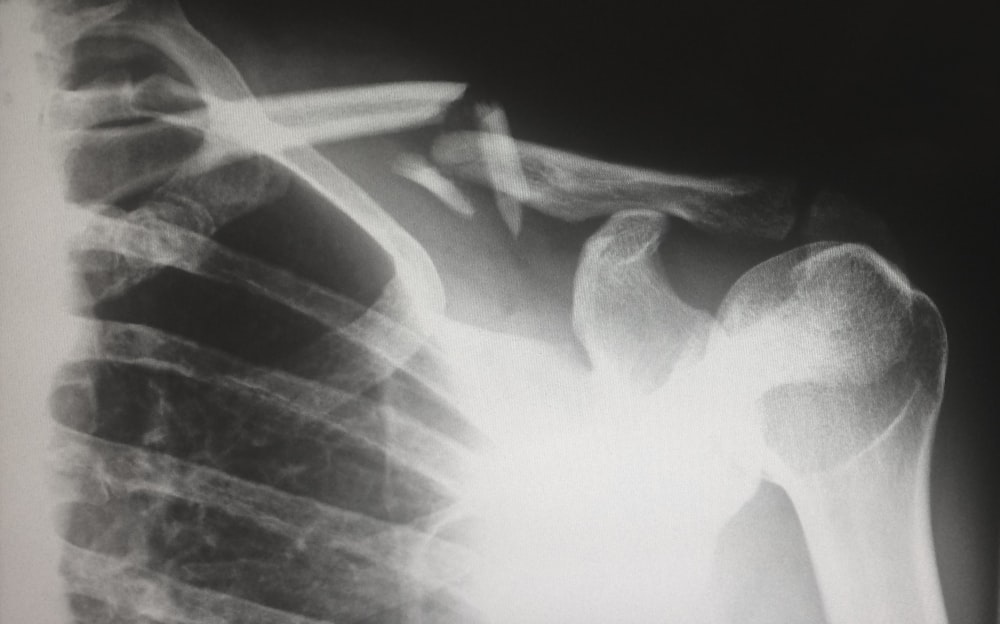目次
肩甲骨回旋運動が腱板断裂例の症状に影響を与えることが明らかに
理学療法士・作業療法士であれば無症候性の腱板断裂症例を担当した機会のある方は多いと思います.
MIRで腱板断裂が確認されるものの,特に症状はないといったケースですね.
これって不思議ですよね.
なぜ腱板が断裂しているにもかかわらず無症状なのでしょうか?
今回は腱板断裂例における症状の有無に肩甲骨回旋運動が関連しているかもしれないといった研究論文をご紹介させていただきます.

今回ご紹介する論文
JSES International Available online 15 December 2020
Differences in scapular motion and parascapular muscle activities among patients with symptomatic and asymptomatic rotator cuff tears, and healthy individuals
Hiroaki IshikawaPT, PhD, Takayuki MurakiPT, PhD
今回ご紹介する論文は2020年に掲載された論文です.
本邦で行われた研究ですね.
研究の背景
Altered scapular motion is thought to be one of the factors associated with the development of symptomatic rotator cuff tears. However, the differences in kinematics and muscle activities of scapular upward/downward rotation between patients with symptomatic and asymptomatic tears are unclear. The purpose of this study was to compare the differences in kinematics and muscle activities of scapular rotation among patients with symptomatic and asymptomatic tears, and healthy individuals.
肩甲骨運動の変化は,症候性腱板断裂の発症に関連する要因の一つと考えられております.
しかしながら有症性腱板断裂症例と無症候性腱板断裂症例の肩甲骨上下回旋の運動学や筋活動の違いは明らかではありません.
この研究では,有症性腱板断裂症例,無症候性腱板断裂症例,健常例との間で,肩甲骨回旋の運動学や筋活動の違いを比較することを目的としております.
研究の方法
Twenty-three patients with rotator cuff tears and 9 healthy individuals (healthy group) participated in this study. Based on a visual analog scale (VAS, 0-100 mm), the patients were divided into symptomatic (13 patients; VAS ≥20 mm) and asymptomatic (10 patients; VAS <20 mm) groups. Scapular upward rotation was measured with a digital inclinometer. Elasticities of the upper trapezius, levator scapulae, and rhomboid major were assessed by using ultrasound real-time tissue elastography to quantify their muscle activities. All measurements were performed at 0°, 60°, 90°, and 120° of active arm elevation in the scapular plane.
この研究では腱板断裂症例23例と健常例9例(健常者群)を対象としております.
VAS(0~100mm)に基づいて,腱板断裂症例を有症候性群(13人,VAS≧20mm)と無症候性群(10人,VAS<20mm)に分類しております.
肩甲骨上方回旋角度についてはデジタル傾斜計を用いて測定し,僧帽筋上部線維,肩甲挙筋,および大菱形筋の組織弾性について超音波エラストグラフィを用いて評価し,筋活動を定量化しております.
すべての測定は,肩甲骨面上の自動挙上0°,60°,90°,120°で行っております.
研究の結果
Scapular upward rotation was significantly less in the symptomatic group (9.4° ± 5.6°) compared with the asymptomatic group (15.7° ± 6.0°; P = .022) at 90° of arm elevation. The activity of the levator scapulae was significantly higher in the symptomatic group compared with the asymptomatic and healthy groups (P = .013 and P = .005, respectively) at 90° of arm elevation. The activity of the upper trapezius was significantly higher in the symptomatic group compared with the healthy group (P = .015) at 120° of arm elevation.
自動挙上90°における肩甲骨上方回旋角度は無症状群(15.7°±6.0°;P = 0.022)と比較して,有症群(9.4°±5.6°)で有意に小さい結果でありました.
また自動挙上90°における肩甲挙筋のの活動は,無症状群と健常群に比べて有症群で有意に高い結果でありました(それぞれP = 0.013,P = 0.005).
僧帽筋上部線維の筋活動は,自動挙上120°において健常者群に比べて有症者群で有意に高い結果でありました(P = 0.015).
研究の結論
Patients with symptomatic rotator cuff tears showed less scapular upward rotation and higher activity of the levator scapulae at 90° of arm elevation compared to patients with asymptomatic rotator cuff tears.
症候性腱板断裂症例は無症候性腱板断裂症例と比較して,肩甲骨の上方回旋角度が小さく,自動挙上90°における肩甲挙筋の活動性が高いことが示されました.
今回は腱板断裂例おける症状の有無に肩甲骨回旋運動が関連しているかもしれないといった研究論文をご紹介させていただきました.
この結果を考えると無症候性の腱板断裂症例は肩甲上腕関節の機能不全を肩甲骨の上方回旋運動で代償していると考えられます.
つまり腱板断裂症例における保存療法では肩甲骨の代償的な運動を獲得することが有益であると考えられます.
また肩甲骨の上方回旋運動を引き起こすためには,肩甲挙筋の過活動を抑制し,僧帽筋中部・下部線維の活動を高めることも重要だと考えられます.






